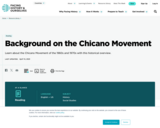
Learn about the Chicano Movement of the 1960s and 1970s with this historical overview.
- Subject:
- Ethnic Studies
- Social Studies
- U.S. History
- Material Type:
- Assessment
- Lesson Plan
- Module
- Author:
- Facing History and Ourselves
- Date Added:
- 06/10/2024

Learn about the Chicano Movement of the 1960s and 1970s with this historical overview.
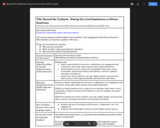
This lesson is geared towards middle school students. Civic engagement with African American
Wisconsinites as classroom speakers is the focus.
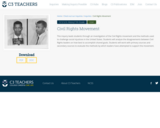
This inquiry leads students through an investigation of the Civil Rights movement and the methods used to challenge social injustices in the United States. Students will analyze the disagreements between Civil Rights leaders on how best to accomplish shared goals. Students will work with primary sources and secondary sources to evaluate the methods by which leaders have attempted to support the movement.
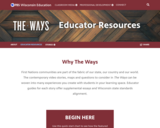
First Nations communities are part of the fabric of our state, our country and our world. The contemporary video stories, maps and questions to consider in The Ways can be woven into many experiences you create with students in your learning space. Educator guides for each story offer supplemental essays and Wisconsin state standards alignment.
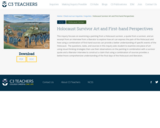
This inquiry focuses on examining a painting from a Holocaust survivor, a quote from a survivor, and an excerpt from an interview from a liberator to explore how art can express the pain of the Holocaust and how using a combination of first-hand sources can provide a better understanding of specific events of the Holocaust. The questions, tasks, and sources in this inquiry asks student to examine one piece of art using visual thinking strategies then use their observations on the painting in combination with a survivor quote and a liberator interview to construct a claim that using a combination of sources provides a better/more comprehensive understanding of the final days of the Holocaust and liberation.
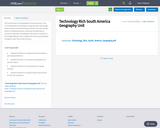
This unit focuses on the geography of South America. The unit incorporates technology by using resources like Google Earth and the CIA World Factbook website. The unit includes links to 5 individual lessons. All lessons include links to necessary materials. Everything for the lesson is created on the Google Platform (docs, slides) and can be easily adapted to Regions other than South America.
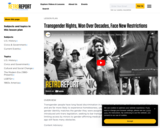
Transgender people have long faced discrimination in employment, marriage, medical care, and other areas, and are far more likely to experience homelessness, unemployment, and mental illness than people whose gender identity matches the gender they were assigned at birth. Today, lawmakers across the country have introduced anti-trans legislation, seeking to bar transgender students from participating in sports and limiting access by minors to gender-affirming medical care. The movement that began nearly half a century ago still faces many obstacles.
Content Advisory:
This lesson covers historical and contemporary demands for equality by transgender people. The film and associated resources address sexuality, violence against transgender people, and other topics that may upset or offend some people.

Meet the Visual Communicators—a team of scientists from the Schloss Visual Reasoning Lab who research visual messaging.
Resources available for learning about this lab include:
• Interactive cards designed to introduce students to scientists in a more personal way
• A video with a personal story that explains why the lab's research matters in real life
• Questions to consider that will spark connection, reflection, and conversation
• An interactive video experience where you can ask questions of scientists in the lab and learn about their research
• An inquiry-based activity that focuses on doing science, using some of the same science practices that the lab uses
• An educator guide with information about standards alignment, curriculum connections, and tips for using the media resources
These resources are part of Meet the Lab, a collection of educational resources for middle school classrooms.